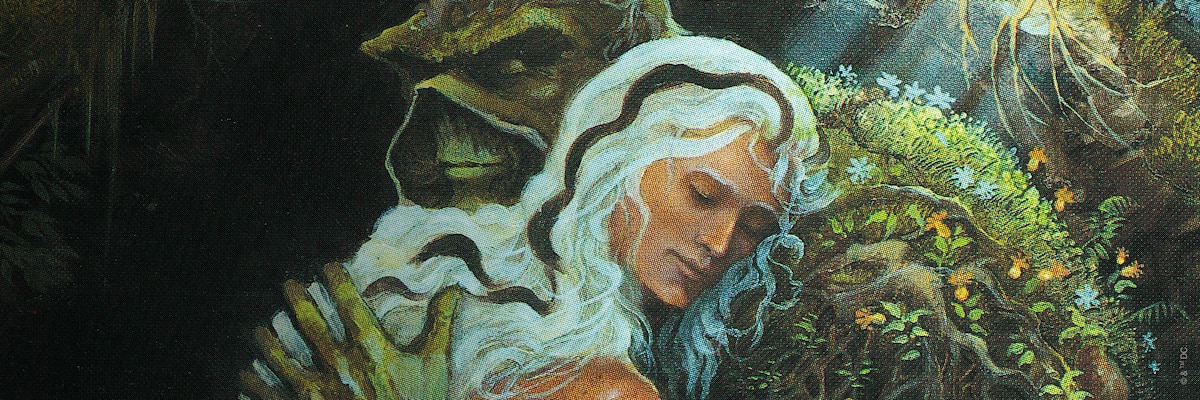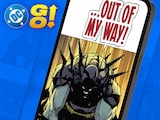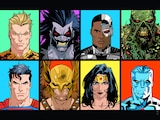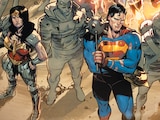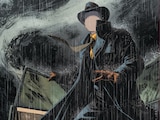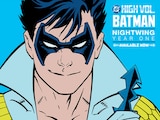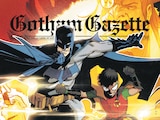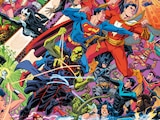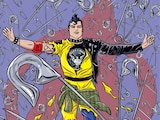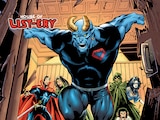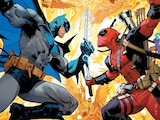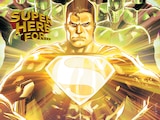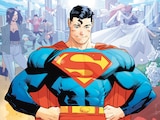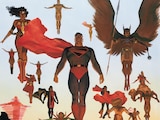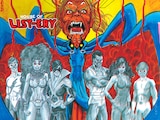Comics have a lot to offer. With the intellectual engagement of prose literature and the emotional immediacy of movies, they’re an ideal medium for all kinds of genres—including horror. All too often that potential goes unrealized. But every once in a while the stars align, a light in heaven shines down, and a hole to hell opens beneath. Such was the case with Swamp Thing: Love and Death.
Arguably the high point of Alan Moore’s run on The Saga of the Swamp Thing, 1984’s Love and Death brought a new level of depth to horror comics, in much the same way the scribe’s Watchmen later would to superhero stories. When he began writing the tale, Moore had already made Len Wein and Bernie Wrightson’s creation his own with February 1984’s classic “The Anatomy Lesson” (Saga of the Swamp Thing #21), which revamped Swampie for the Modern era. Moore was helped immeasurably in his first full-length horror comic by the book’s art team, penciler Steve Bissette and inker John Totleben.
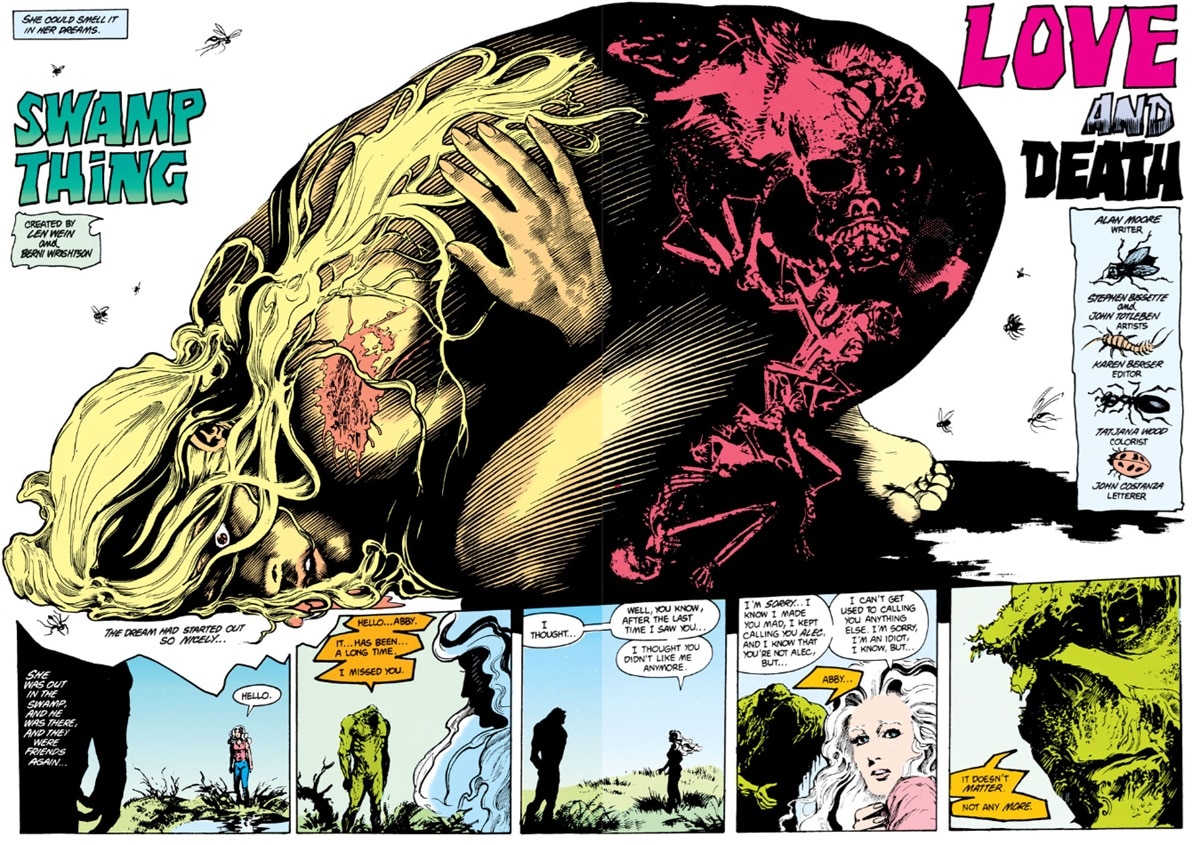
As Bissette told me when I interviewed him in 2012 for Comic Heroes magazine, “My memory is Alan let us all know right from the start, with [issue #20] and the first letters that we got, that this was his first experiment with long-form comics. So, he was learning as he went. John Totleben had never done long-form comics before, and I had never worked on a periodical comic. We were all learning as we went.”
Call it beginner’s luck, but the team earned rookie-of-the-year status with “The Anatomy Lesson.” Here, they folded Swampie’s origin in upon itself, revealing the “muck-encrusted mockery of a man” was not—as heretofore believed—deceased scientist Alec Holland reborn as a plant, but rather a plant who’d absorbed the mind of Alec Holland.
Lifelong fans of the genre, Bissette and Totleben brought with them a determination to expand the perceived boundaries of horror comics. As Wein and Wrightson had explored the tropes of traditional European horror and 20th century monster movies, so Bissette and Totleben sought to channel the contemporary horror of writers like Stephen King and Clive Barker, and filmmakers like George Romero, David Cronenberg and John Carpenter. The result, in Love and Death, was unlike anything mainstream comics had produced.
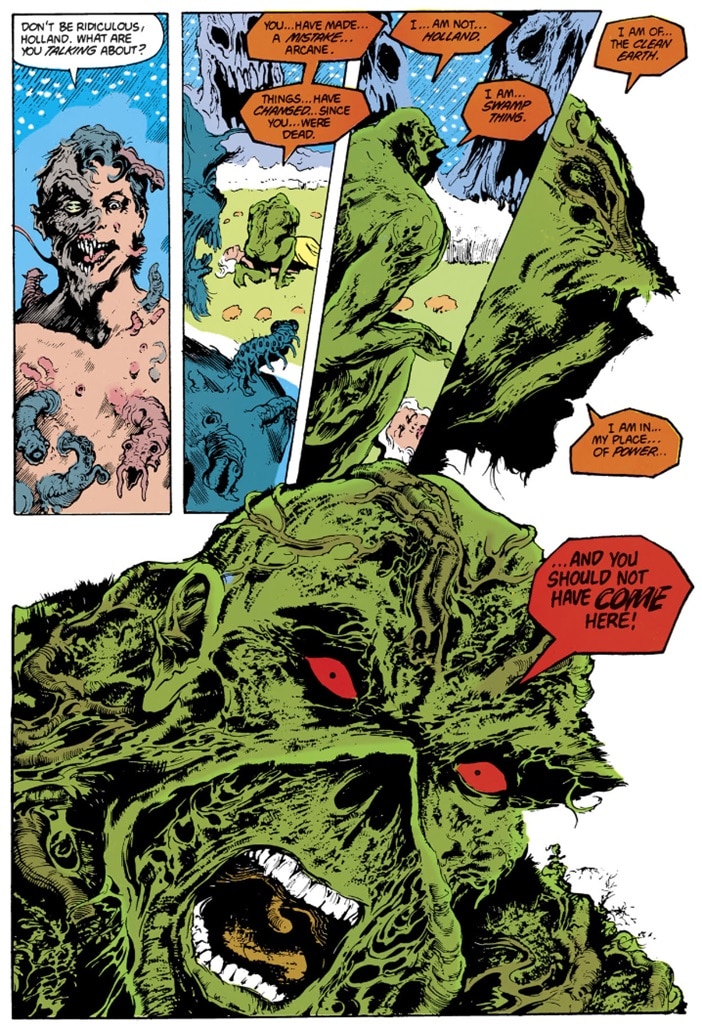
“John and I certainly shared an ongoing enthusiasm,” said Bissette. ”It was part of our friendship and our relationship. We were both really into horror films… Alan and I shared an enthusiasm for a lot of the same filmmakers as well. For John and I, it was more the movies and the comics that we shared an enthusiasm for. John and I used to go to the horror movies every week. I was probably more the reader of the pair of us, in terms of horror literature… Alan was the one that turned us onto Clive Barker. Alan was mailing us copies of the original paperback editions of The Books of Blood as they came out. That was while we were doing Swamp Thing that the Books of Blood hit, so we really were in the thick of it. Alan and I and John talked about, ‘Why can’t we reach the readers of Stephen King?’ That became part of our dialogue.”
After a prologue in Saga of the Swamp Thing #28 (illustrated by Shawn McManus as an homage to Wirightson)—in which Swampie figuratively and literally buries his past—Love and Death begins in earnest with issue #29 (the first Swamp Thing issue to abandon the Comics Code’s infamous “Seal of Approval”). It opens like many contemporary supernatural thrillers, with a young couple—Swampie’s friend/potential love interest Abigail Arcane and her husband Matt Cable—moving into a creepy new home. What follows, in issues #30 (“A Halo of Flies”) and #31 (“The Brimstone Ballet”, the first issue to drop the “The Saga of the” part of the title, and add the tag line “Sophisticated Suspense”) and Annual #2 (“Down Amongst the Dead Men”), is a dark psychological odyssey laced with body horror, incest and a quest to save Abby’s soul from her satanic uncle Anton Arcane and Hell itself.
Along the way, other DC horror stars like Deadman, the Phantom Stranger, the Demon and the Spectre put in appearances. Following a whimsical interlude in Saga of the Swamp Thing #32 (the Walt Kelly/Pogo tribute “Pog,” again illustrated by McManus), Abby learns of Alec’s true nature in issue #33 (“Abandoned Houses,” reprinting Swamp Thing’s first-ever appearance). Then the two express their love to each other in the landmark erotic, psychedelic issue #34 (“Rite of Spring”), a tour de force from Moore, Bissette and Totleben. Consider it the “Ave Maria” to Love and Death’s “Night on Bald Mountain.”
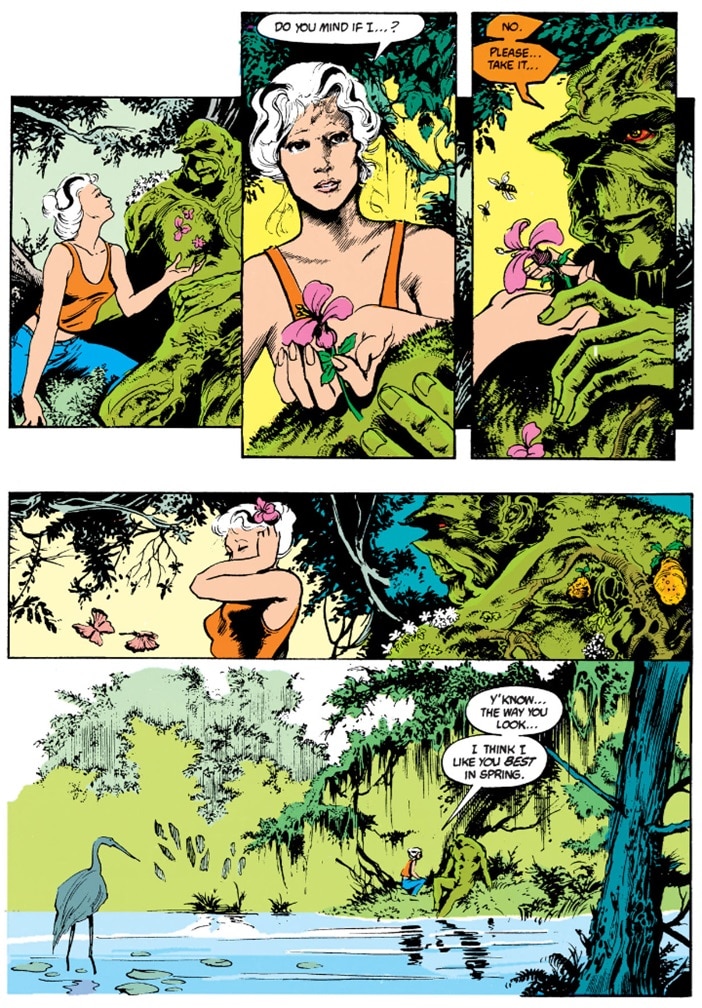
“That issue grew out of a postcard I sent to Alan,” said Bissette. “We were starting work on the issues in which Abby goes to Hell, and I sent a postcard saying, ‘You know, if Abby was a real woman, she would be in a mental asylum by now. Is there any way you can convince DC to let us do one issue where it’s just Abby and Swamp Thing having a good day in the swamp?’ Then Alan turned it into that beautiful story. We were at a point where we needed to start working in some grace notes with the characters, some downtime with the characters. Part of that emerged from my love for horror: if it’s relentless, it gets really monotonous, and you want to build an emotional orchestration of effect, where you’ve got downtime and then you crank up the heat on the stove so to speak.”
That heat came back with further adventures for Swamp Thing and Abby, both those written by Moore and by his successor, writer/artist Rick Veitch (whose long lost final Swamp Thing story will soon be published). But Love and Death remains unique in how it brought a singular moment in pop culture history—the anything-goes Golden Age of ‘80s horror—to comic books. Among King’s Pet Sematary and Barker’s Books of Blood, it’s earned its place as a milestone of the genre.
Swamp Thing: Love and Death by Alan Moore, Steve Bissette and John Totleben is available in bookstores, comic shops, libraries and digital retailers as a part of the Swamp Thing softcover collection. It can also be read in full on DC UNIVERSE INFINITE.
Joseph McCabe writes about comics, film and superhero history for DC.com. Follow him on Instagram at @joe_mccabe_editor.
NOTE: The views and opinions expressed in this feature are solely those of Joseph McCabe and do not necessarily reflect those of DC or Warner Bros. Discovery, nor should they be read as confirmation or denial of future DC plans.
